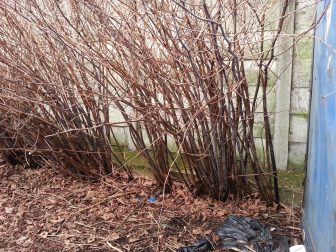 Estate agents are all too aware of the potential problems caused by invasive plant species such as Japanese Knotweed, with a number of sales falling through over the years as a result of the much-feared visitor to our gardens.
Estate agents are all too aware of the potential problems caused by invasive plant species such as Japanese Knotweed, with a number of sales falling through over the years as a result of the much-feared visitor to our gardens.
It was estimated last year that Japanese knotweed wiped an estimated £11.8bn off the value of the UK housing market, as the invasive plant continued to spread across the country making homes more difficult to sell.
With that thorny issue in mind, homeowners, including potential vendors, are being urged to be extra vigilant for signs of the invasive plant which will be harder to spot over the winter few months.
With winter fast approaching, the Japanese knotweed growing season draws to a close and the plant’s above-ground growth dies back. But invasive plant specialist Environet UK is warning homeowners and buyers that though it may look dead, knotweed will be replenished with new energy reserves from the summer growth which are drawn down and stored in its powerful underground rhizome system, ready to reemerge more strongly next spring.
 By the end of November or early December, knotweed’s heart-shaped leaves have turned yellow and mostly fallen to the ground. Its bamboo-like canes have lost their green appearance and started to turn brown and brittle – although most will remain standing. The distinctive crown will still be visible, but no fresh growth will appear until the ground begins to warm in the spring, usually around March or April.
By the end of November or early December, knotweed’s heart-shaped leaves have turned yellow and mostly fallen to the ground. Its bamboo-like canes have lost their green appearance and started to turn brown and brittle – although most will remain standing. The distinctive crown will still be visible, but no fresh growth will appear until the ground begins to warm in the spring, usually around March or April.
Homebuyers should be especially vigilant when viewing properties during the winter months, when property owners may be tempted to take advantage of the plant’s hibernation which makes it much easier to conceal. This is illegal and sellers are required to answer truthfully on the TA6 Property Information Form, which asks a direct question about whether or not the property is affected. Failure to disclose the presence of knotweed could lead to a costly legal claim for misrepresentation when the plant regrows.
Nic Seal, founder and MD of Japanese knotweed and invasive plant specialist Environet UK, said: “Risks to homebuyers are greater during winter, when knotweed is relatively easy to hide. There are thousands of legal cases brought every year after sellers have failed to disclose the presence of knotweed, in some cases even laying new lawns, patios, sheds and decking in an effort to hide it. But rest assured, it will grow back and when it does, the buyer may have a strong case to sue the seller for misrepresentation to recover the cost of treatment, legal fees and any resulting decrease in the value of their home. I’d advise homeowners, whether they plan to sell or not, to take action through the winter months to tackle knotweed on their land to ensure they don’t face an even bigger problem next spring.”
Herbicide treatment cannot be carried out during the winter months, since it requires the plant to be in leaf in order to effectively absorb the chemicals. But that does not mean knotweed should be left until spring and there are very effective, low-cost treatments that can be undertaken through the autumn and winter with excellent results, allowing gardens to be fully operational during the summer months.
The DART™ method involves excavating the bulk of the knotweed rhizomes from the ground, reducing the plant’s vigour and stimulating growth, enabling any new shoots that emerge the following spring to be herbicide treated.
Top Tips: How to identify Japanese knotweed during winter
· The green, heart-shaped leaves will turn yellow, then brown, before falling from the plant
· The hollow canes will turn brown and die, though they usually remain standing
· The distinctive crowns will remain visible, emerging through the surface of the soil
· In spring, red or purple asparagus-like shoots will grow, quickly forming into green bamboo-like stems.


“It was estimated last year that Japanese knotweed wiped an estimated £11.8bn off the value of the UK housing market.”
How much?! How was that estimation estimated? I think someone went awry with their calculation.
You must be logged in to like or dislike this comments.
Click to login
Don't have an account? Click here to register
I read an article a few weeks ago from a specialist surveyor who says Japanese Knotweed is nowhere near as bad as it was first thought. It is now treatable and should not damage buildings or structures by its invasion. Probably in a year or two we will all be drinking Japanese Knotweed tea and growing it in our gardens.
You must be logged in to like or dislike this comments.
Click to login
Don't have an account? Click here to register